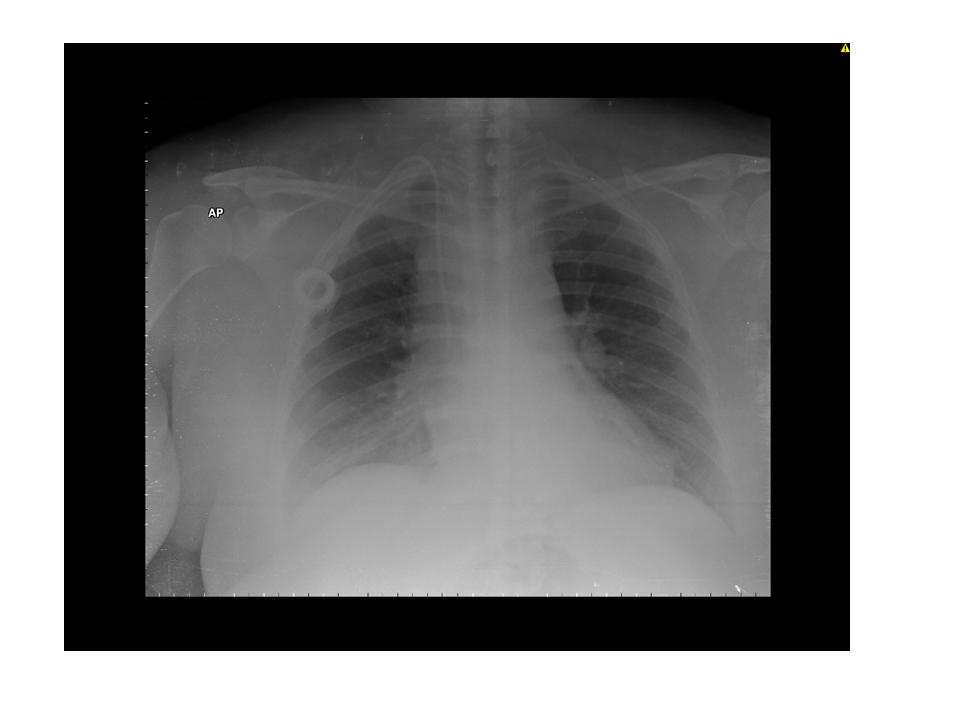A root-cause analysis: How could I fail the diagnosis?
Figure 1 Figure 2
A 50-year-old female patient with a diagnosis of metastatic colon cancer and chemotherapy treatment went to the clinic because of a generalized swelling more important around the facial area (Figures 1 and 2).
CLINICAL CASE: This female patient with a diagnosis of colon cancer was receiving chemotherapy in a outpatient base. She went to the Oncology Department referring mild dyspnea without thoracic pain or fever, starting four days before. Physical examination showed her facial area swollen and her arms and ankles. No jugular estasis was present. Pulmonary and heart sounds were normal.
CLINICAL EVOLUTION: Initially the symptoms were related with the treatment , a five days continuous infusion of Fluoruracil. Heart murmurs were clearly audible and pericardial effusion was discarded. Hematological values and creatinin levels were normal. A blood sample was taken to evaluate the thyroid function.
First Diagnosis: Toxicity related with chemotherapy
Fisrt Action: the patient went back home with a symptomatic treatment, prednisone, and a new appointment in two days time.
SECOND VISIT: No major improvement was detected in the second clinical assesment. Oxygen saturation was 98%. A thoracic x-ray was considered normal.
EVOLUTION: Without a clear clinical diagnosis a CAT-scan showed the presence of a superior vena cava thrombosis.
FINAL DIAGNOSIS: Superior Vena Cava Syndrome Catheter Associated .
COMMENTS: Superior vena cava syndrome can be diagnosed clinically with a detailed history and physical exam. However, imaging is needed for a definitive diagnosis.
A more complete anamnesis in this patient showed that she had a familiar Factor V Leiden, a marker for a hypercoagulability status. Colon cancer is another situation prone to hypercoagulability. Also she had another catheter removed before due to thrombosis. The patient started with therapeutic heparin and a catheter removal with a complete resolution of the syndrome.
ANALYSIS:
COGNITIVE ASPECTS:
. Availability bias: chemotherapy toxicity is the first image that comes to mind in an oncological clinic.
.Premature closing: a combination of a lack of a complete anamnesis without broading the differential.
.Patient characteristics: a combination of Factor V Leiden, colon cancer and catheter insertion is not common
SYSTEM ASPECTS:
. Complete medical problems are not recorded in an “alarm” format, making difficult the whole integration of the information.
. Devices: some portable devices are difficult to see and sometimes even the patient doesn,t speak about them, as in this case with the Port-A-Cath. Maybe some “external” identification must be implemented.
LEARNING POINTS:
. A complete history and physical examination is always important.
Never give up without thinking more about for the symptoms of the patient.
.Some patients are zebras (Factor V Leiden)
.Internal or subcutaneous devices must be recognized easily.
.Before a catheter insertion be sure that the patient doesn,t have a hypercoagulability status.






